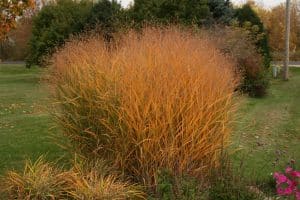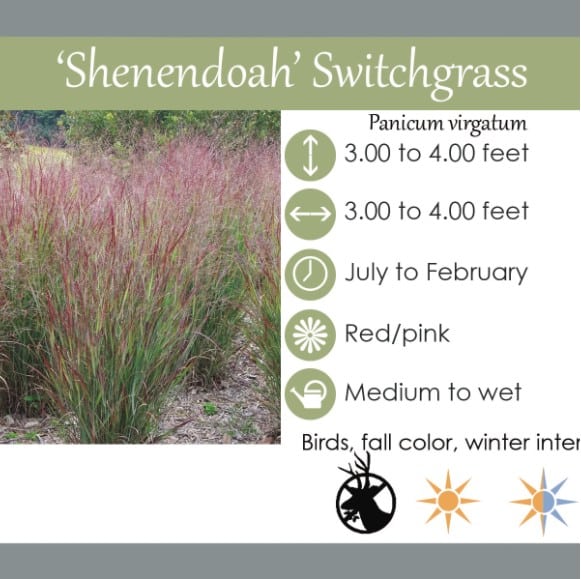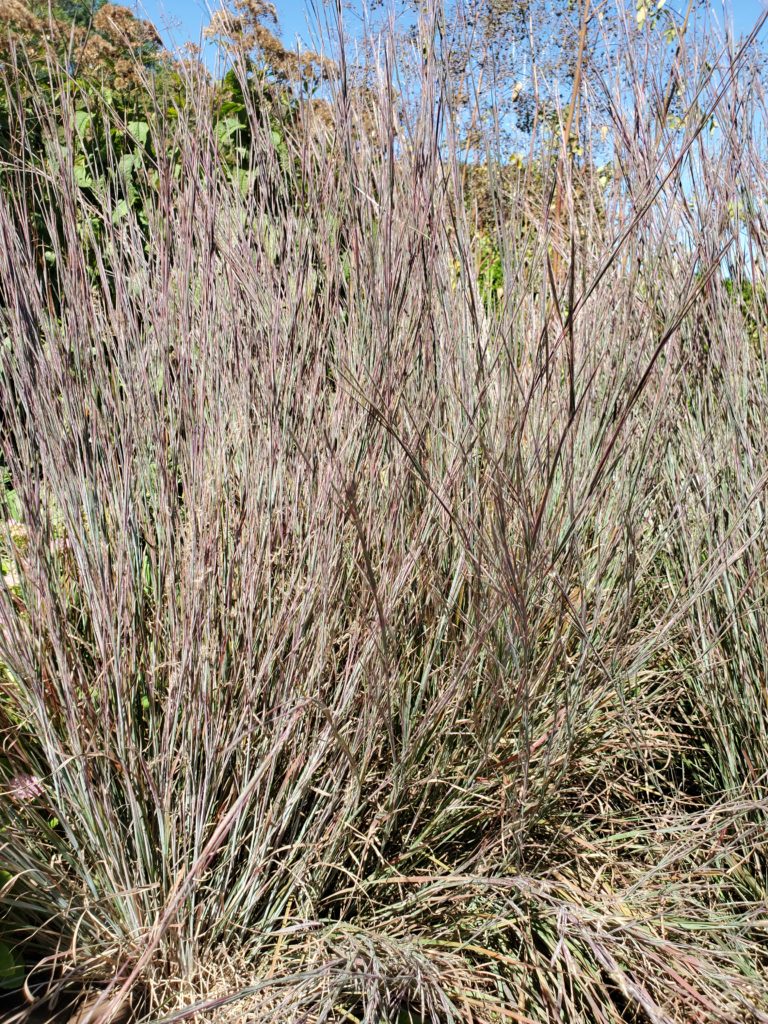Panicum virgatum is a clump-forming, warm season native ornamental grass that has great seasonal interest. When in flower, flower panicles may bring total plant height to 6′. Features medium green leaves which turn yellow (sometimes with orange tints) in autumn, fading to tan-beige in winter. Foliage clump is topped in mid-summer by finely-textured, pink-tinged, branched flower panicles which hover over the foliage like an airy cloud. Panicles turn beige as the seeds mature in fall with the seed plumes persisting well into winter. Not to mention, the seeds are eaten by ground-feeding songbirds and game birds and foliage provides cover and nesting material for wildlife. Switchgrass is a native prairie grass that grows best in wet to medium soil with full sun. Therefore, it can be used in a full sun to part sun rain garden as it tolerates both drought and wet soil.
LGS Notes:
When planting switchgrass I like to combine it with late blooming asters and fringe trees (Chionanthus virginicus) for interesting fall color combinations. In addition, it also works well with native prairie perennials such as purple coneflower, black-eyed susan, and bee balm. However, in prairies it is found along with big bluestem (Andropogon gerardii), little bluestem (Schizachyrium scoparium), Indiangrass (Sorghastrum nutans), and other grasses and forbs. -Alex
I have had success with using the ‘Shenendoah’ cultivar as a focal point in container plantings. It provides some much-needed late-season interest and color for your pots, when other annuals and perennials may be fading. -Jessica
I appreciate the adaptability of switchgrass, as well as the structure it provides in the late-season garden. And it’s perfect for troublesome boggy spots and stormwater management areas! Interplanting it amongst early season perennials like Penstemon works well so that it fills the gaps left behind as their blooms fade. For a soft late summer and fall color palette, I like to pair it with bluestar (Amsonia spp.), coneflower (Echinacea spp.), Culver’s root (Veronicastrum virginicum), Joe Pye weed (Eutrochium spp.), aster (Symphyotrichum spp.), and New York ironweed (Vernonia noveboracensis). However, for those seeking bolder contrast, the bluish-foliage really makes yellow blooms pop. For that effect, consider pairing with tickseed (Coreopsis spp.), black-eyed or brown-eyed Susan (Rudbeckia spp.), false sunflower (Heliopsis helianthoides), or goldenrod (Solidago spp.). -Amy
Click Here to Get a Quote for Switch grass from Our Online Shop!
Latin Name: Panicum virgatum
Common Name: switch grass
Type: Ornamental grass
Family: Poaceae
Native Range: North America
Zone: 5 to 9
Height: 3.00 to 6.00 feet
Spread: 2.00 to 3.00 feet
Bloom Time: July to February
Bloom Description: Pink-tinged
Sun: Full sun to part shade
Water: Medium to wet
Maintenance: Low
Suggested Use: Naturalize, Rain Garden
Flower: Showy, Good Cut, Good Dried
Leaf: Good Fall
Attracts: Birds
Other: Winter Interest
Tolerate: Drought, Erosion, Dry Soil, Wet Soil, Black Walnut, Air Pollution
Follow Us on Instagram and Like Us on Facebook
Blog Author: Alex Wiitala



